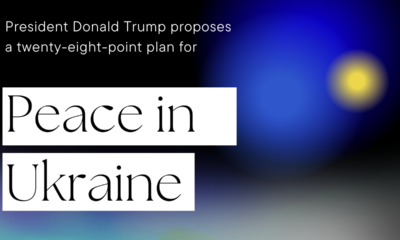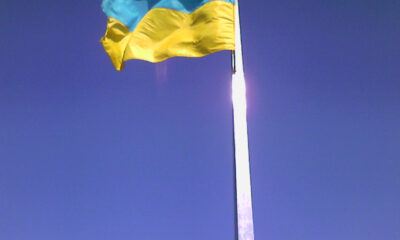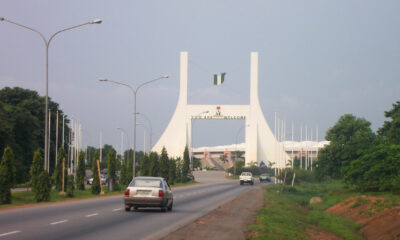Civilization
Jihadist Roots and Damascus’s Future
Damascus faces an uncertain future with a jihadist temporary government and an apparent moderate named to lead it.
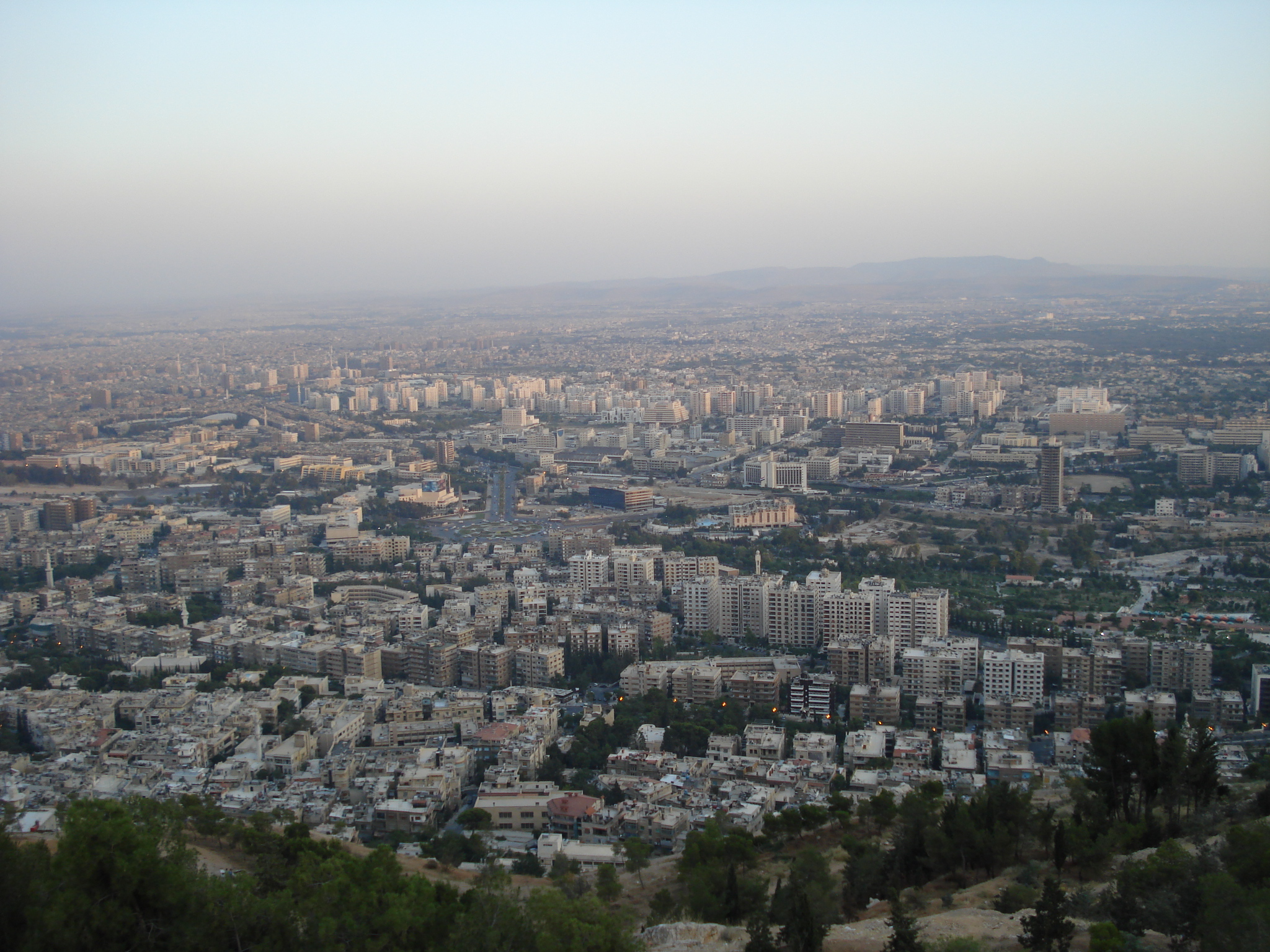
Muhammad al-Bashir—not former Syrian Prime Minister in exile Riad Hijab or current Prime Minister Muhammad Jalali—has been named to lead the transitional government in Damascus. His appointment, reportedly orchestrated by al-Golani, raises critical questions about Syria’s future trajectory.
Governance amid Syria’s fragmentation
Al-Bashir’s rise is distinguished by his fusion of technocratic and religious credentials. In Idlib’s war-scarred governance, where engineers and doctors often took on administrative roles out of necessity, he represents a deliberate synthesis of technical and ideological expertise. A product of Syria’s pre-revolution secular education system—earning an engineering degree from the University of Aleppo in 2007—he later acquired Islamic legal training under insurgent state-building conditions. His dual identity bridges technical reconstruction, such as electricity grids, water systems, and digital governance, with the moral-legal framework of Islamic jurisprudence, encompassing hudud punishments, zakat distribution, and Sharia-compliant contractual principles. This combination reflects a strategic effort to integrate pragmatic governance with ideological legitimacy.
Damascus faces critical infrastructure challenges, including electricity and water systems decimated by war. Before the conflict, the province accounted for a significant share of Syria’s 40,000 GWh annual electricity generation, acting as the nexus of national grids linking coastal power plants, eastern gas fields, and central transmission lines. Similarly, the city’s water supply, reliant on the Wadi Barada springs, has been subject to factional control throughout the war. Al-Bashir’s task would include devising granular, actionable plans, such as implementing a regulated pricing system rooted in Islamic principles like the prohibition of hoarding (ihtikar), ensuring fair pricing and equitable distribution. Such measures could appeal to pragmatic local stakeholders prioritizing service restoration over ideological adherence.
The Structural Intricacies of Syria’s Social Field
Idlib epitomizes how authority is improvised within shattered state frameworks. Following the decline of Ahrar al-Sham and other al-Qaeda-linked groups, Hay’at Tahrir al-Sham (HTS) emerged as a hybrid governance entity. Its “Salvation Government” blends jihadist credentials with Islamic jurisprudence and administrative pragmatism. Regulatory bodies for utilities such as water, electricity, and bread distribution coexist with municipal councils formed from local notables rather than strict ideological loyalists.
HTS’s authority rests on a web of accommodations: cross-border financial flows via the Bab al-Hawa crossing and Turkish humanitarian networks; negotiations with entrenched rural clans tracing their lineage to Ottoman-era land registers; and religious legitimacy cultivated through Quranic schools that meld Salafi interpretations with older Islamic traditions inherited from Ottoman madrasas. Far from transplanting a global jihadist model, HTS has embedded itself within micro-level social contracts informed by tribal prerogatives, memories of Mandate-era autonomy, and habitual cross-border trade.
Damascus has always been a center of administration and religion
Extending HTS’s influence to Damascus via figures like Muhammad al-Bashir presents a stark challenge. Damascus, far from a peripheral zone, has been a historical nexus of administrative sophistication, cultural cosmopolitanism, and religious authority. Under the Ottomans, it was a provincial capital and a linchpin of the Hajj route, enriched by juristic scholarship and modernizing reforms introduced by figures like Midhat Pasha. The French Mandate further layered European legal frameworks onto religious courts, while Arab nationalist thought flourished in intellectual salons of prominent families like al-Azm and al-Atassi. The Baathist era centralized power in a tightly controlled bureaucracy, balancing concessions to Sufi lodges, venerable educational institutions, and Levantine merchant networks.
Damascus’s layered social and institutional memory complicates any attempt to impose the Idlib model. HTS’s narrative of rationalizing governance in Idlib, where pre-war institutions were sparse, collides with Damascus’s entrenched sociopolitical grammar and living memories of state order. Al-Bashir would need to recalibrate centuries-old lines of authority, engaging Ottoman-era waqf custodians near the Umayyad Mosque, descendants of merchant dynasties like the Hamidi and Bakdash families in Suq al-Hamidiyya, and religious scholars whose legitimacy is rooted in premodern knowledge traditions.
Many minorities
Simultaneously, he must address the concerns of minority communities shaped by their distinct histories under the Mandate and Baathist periods. Christian quarters near Bab Touma remain influenced by the Greek Orthodox Patriarchate, while Alawite and Druze communities recall earlier sectarian “statelet” experiments under French rule and harbor suspicions of Sunni Islamist ascendancy. Further complicating matters is the shadow economy controlled by regime-linked elites like Rami Makhlouf, whose networks of security services, telecoms, and smuggling remain deeply entrenched.
Al-Bashir faces the formidable task of navigating Damascus’s intricate social, religious, and economic hierarchies. The city’s history, spanning Umayyad caliphs, Ottoman governors, French high commissioners, and Baathist apparatchiks, has produced a diverse elite fluent in the myriad registers of power. Replicating Idlib’s governance model in such a sophisticated and historically anchored environment demands not only pragmatic adaptation but also an acute sensitivity to Damascus’s unique sociopolitical landscape.
Ideological Entrapment and the Problem of Pluralistic Legitimacy
To imagine al-Bashir forging a legitimately inclusive order under the shadow of HTS is to contend with a daunting legacy of doctrinal rigidity, strategic suspicion, and intellectual impoverishment. Rather than drawing from a rich tapestry of Islamic governance models, he emerges from an ecosystem shaped by the operational codes of a jihadist organization that once openly proclaimed affinity with al-Qaida’s global insurgent strategies. Institutions like the University of Idlib—operating under HTS patronage—functioned less as centers of juristic pluralism and more as incubators of a monolithic, militant Salafi hermeneutic. Their curriculum emphasized textual literalism and combative orthodoxy, stifling the kind of jurisprudential elasticity required to legitimate a lasting pluralistic settlement. Al-Bashir, therefore, must attempt a breathtaking intellectual maneuver: to conjure a jurisprudential and historical vocabulary that can accommodate religious and communal diversity from within a matrix that has long prized ideological conformity and existential struggle.
A surprising tradition of tolerance – required for an empire
Such an undertaking would demand the excavation of Islamic legal traditions that have been deliberately sidelined by the jihadist milieu. In classical Islamic thought, a variety of schools—Hanafi, Shafi‘i, and even certain Maliki traditions—developed frameworks for managing plural societies. The Ottoman Empire’s millet system, for instance, regulated the status of Greek Orthodox Christians, Armenian Apostolics, and Jewish communities, allowing them internal legal autonomy under the overarching sovereignty of the Sultan. This system did not emerge from a theological vacuum; it was grounded in centuries of Hanafi jurisprudence that recognized contracts (aqd) and covenants (ahd) with non-Muslims as structurally integral to imperial governance. The codification of the “Pact of ‘Umar” in various juristic manuals, as well as nuanced 16th-century Ottoman fatwas by authorities like Ebu’s-Su’ud Efendi, reflected a painstaking negotiation between normative Islamic law and the strategic imperatives of maintaining a vast, religiously diverse empire.
Mamluk history
Likewise, the Mamluks, who ruled from Cairo between the mid-13th and early 16th centuries, managed a complex political mosaic—Coptic Christians crucial to administration and taxation, Jewish financiers essential to commerce, and restive Bedouin tribes on the empire’s peripheries. Mamluk authorities carefully balanced juristic strictures with pragmatic statecraft. Their legists often granted local notables a circumscribed but recognized space to adjudicate communal matters. Ayyubid Damascus, too, served as a hub of intellectual cross-pollination: it hosted Shafi‘i colleges alongside Hanafi and Hanbali institutions, each with a slightly differing approach to managing non-Muslim subjects and inter-communal interactions. Even earlier Abbasid-era caliphates, especially during the 9th and 10th centuries, tolerated a “mosaic” of sects, schools of law, and non-Muslim communities who played crucial roles in the imperial bureaucracy, translation movements, and the commerce that passed through Baghdad and Basra.
The new Damascus
Yet these precedents arose in political ecologies vastly different from the one al-Bashir now confronts. The Ottomans’ pluralism was tethered to imperial might, sustained by a capacious bureaucracy, a robust tax base, and a strategic interdependence with Christian principalities along their frontiers. The Mamluks and Ayyubids inherited and adapted a sophisticated juridical culture in an era when multiple madhahib (legal schools) flourished in close proximity, producing a competitive legal marketplace in which more accommodating rulings could be justified under conditions of state necessity. By contrast, the governance structure in Idlib today is fragile, resource-depleted, and internationally isolated—a war-ravaged patchwork of contested loyalties. The very precondition that once made pluralistic tolerance a matter of state survival (i.e., the need to secure trade routes, maintain diplomatic relations with rival empires, or placate influential merchant guilds) is absent in a territory defined by parochial war economies, smuggling networks, and periodic aerial bombardments.
Warlike influences
Moreover, the intellectual depth and legal pluralism that informed historical precedents is unlikely to be found in the contemporary clerical strata affiliated with HTS. Their legal references often hinge on a narrow range of sources—reverential readings of Ibn Taymiyya’s polemics against the Mongols, selective citations of early Salafi reformers like Muhammad ibn ‘Abd al-Wahhab, and modern jihadist ideologues who sacralize perpetual confrontation with perceived enemies of Islam. Such texts are structurally ill-suited to justifying concessions to religious minorities or offering a stable doctrine of communal autonomy. The subtlety found in medieval treatises—such as al-Qarafi’s delineations of rights for non-Muslims in a Muslim polity, or the comparative jurisprudential analyses in the works of Ibn ‘Abd al-Salam—requires an environment supportive of scholastic inquiry, legal debate, and public reasoning. Absent these conditions, citing long-dead jurists can look like a cynical stratagem rather than a credible shift in ideological direction.
The present government does not recognize history
Nor can one overlook the deep psychological scars and entrenched narratives that shape the local political imagination. Idlib’s inhabitants have witnessed the harsh strictures imposed by HTS moral police, the suppression of dissent, and a legal culture of fear rather than trust. Invocations of Ottoman or Mamluk precedents may come across as historical curiosities, far removed from daily life in a province where power still flows from the barrel of a gun and foreign donors shape policy from afar. Without substantial institutional changes—such as establishing councils that include non-Salafi religious scholars, empowering technocrats who can negotiate resource-sharing arrangements, and ensuring reliable dispute resolution mechanisms accessible to non-Muslims and heterodox Sunni communities—al-Bashir’s gestures toward an “inclusive” fiqh risk evaporating into empty rhetoric.
A daunting task for the new leader of Damascus
Ultimately, the challenge is not merely to articulate a new foundational myth. Al-Bashir would need to craft a comprehensive epistemic framework that reconciles a legacy of militant exclusivism with a new ethos of pluralistic governance. He must stitch together the learned traditions of distant imperial courts and medieval jurists, the wartime experiences of Idlib’s fractured communities, and the minimal legitimacy of an insurgent authority clinging to power. Achieving that in the face of HTS’s entrenched Salafi-jihadist orthodoxy—in an environment bereft of the structural and scholarly endowments that once made Islamic pluralism a pragmatic statecraft tool—is nothing short of quixotic. The deeper the historical and jurisprudential excavation, the more improbable it seems that al-Bashir can spin a coherent narrative of inclusive legitimacy out of the doctrinal and institutional rubble left by years of jihadist rule.
Granular Policies and Structural Reforms
Beyond the veneer of rhetorical overtures, the substantive test of al-Bashir’s commitment to inclusive governance lies in the intricate, historically resonant details of institutional restructuring. To read these efforts optimistically would ignore the deep sedimentation of failed reforms across the Levant over the past century. The notion, for instance, that local governance councils might transcend ceremonial gestures and genuinely integrate Christians, Alawites, Kurds, and Armenians—groups long peripheralized by a series of modernizing states—runs counter to most historical precedents.
Consider the late Ottoman-era attempts to accommodate ethnic and religious communities via communal councils (majalis milliyya) under the Millet system: these councils, while granting limited autonomy, were typically subordinate to the Sublime Porte’s administrative prerogatives and rarely dented the empire’s centralizing trajectory. In French Mandate Syria (1920–1946), efforts to codify land tenure and integrate traditional notables into the legal-administrative framework ultimately recast pre-existing hierarchies rather than dismantling them, culminating in cadastral surveys that formalized inequalities and deepened the rift between urban elites and marginalized rural tribes.
It’s been tried before – and failed
Now, decades later, the challenge of fusing customary law (ʿurf) with Islamic legal principles and modern civil statutes is not an unprecedented innovation but the latest in a lineage of uneven legal syntheses attempted throughout the region. The late Ottoman Tanzimat reforms (1839–1876) introduced codifications such as the Mecelle, which attempted to harmonize Sharia-derived principles with commercial and civil codes drawn from European models. Yet, these reforms never fully resolved the tension between local practices, Islamic jurisprudence, and the state’s desire for uniformity, leaving behind a legacy of patchwork legal pluralism that successive Arab nationalist regimes inherited and fumbled.
It is hard to imagine that al-Bashir’s team—operating amid a war-scarred Syrian landscape plagued by destroyed registries, disputed claims of ownership, and mass internal displacement—will succeed where the Tanzimat, the Mandate authorities, and Ba’athist technocrats failed. More likely, any new land and property adjudication frameworks will simply re-inscribe power onto legal documents, allowing entrenched insiders to absorb the language of “custom” and “Islamic justice” for their own ends while minorities and rural communities remain structurally disadvantaged.
Judicial impartiality?
Turning to the judiciary, it would be naïve to assume that an institution once weaponized for political control can suddenly metamorphose into a bulwark of impartiality. The Syrian judiciary, like those in other post-colonial Arab states, inherited a legal complex that was first shaped by late Ottoman modernizers, then reconfigured by French Mandate jurists blending Napoleonic codes with existing local norms, and finally molded by Ba’athist social engineers who subjected Islamic jurisprudence to party imperatives. In periods of “reform”—for instance, the early years of Hafez al-Assad’s regime—ostensible judicial independence was rapidly curtailed when judges stepped out of line.
Other regional experiments—such as Morocco’s intermittent judicial modernization efforts or Egypt’s post-1952 judiciary, which oscillated between semi-autonomy and subservience—show that formal legal pluralism and codified procedural checks matter little without safeguards against executive interference. Restoring genuine integrity would require establishing judicial councils with substantial minority representation, robust protections for defense counsel, and open access to legal archives—steps that challenge the entire architecture of authoritarian governance and thus are profoundly unlikely.
This article was originally published by RealClearDefense and made available via RealClearWire.
Carlo J.V. Caro has an advanced degree in Islamic Studies from Columbia University and is a political and military analyst. He has published numerous articles in the U.S. and Israel on foreign affairs and security.
-

 Civilization3 days ago
Civilization3 days agoDC Pipe Bomb Arrest Raises Questions About Christopher’s Wray’s FBI
-

 Civilization4 days ago
Civilization4 days agoThe Legal Logic Behind U.S. Operations Against Narco-Terrorist Networks
-

 Executive4 days ago
Executive4 days agoNewsom’s ‘National Model’ for Homeless Wracked by Fraud
-

 Executive3 days ago
Executive3 days agoWhen You’re in a Hole, Stop Digging
-

 Education3 days ago
Education3 days agoWaste of the Day: Taxpayers Subsidize Football Coach Severance
-

 Executive2 days ago
Executive2 days agoWaste of the Day: Obamacare Failed Test, Approved Fraudulent Subsidies
-

 Executive4 days ago
Executive4 days agoWaste of the Day: Feds Pay Nonprofits That Sue the Government
-
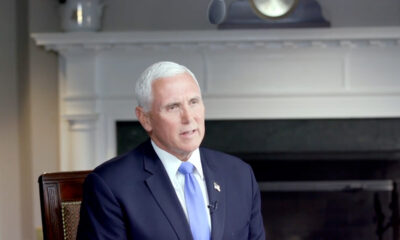
 Civilization2 days ago
Civilization2 days agoPence Calls on Trump To Fire RFK Jr Over Abortion Drug






